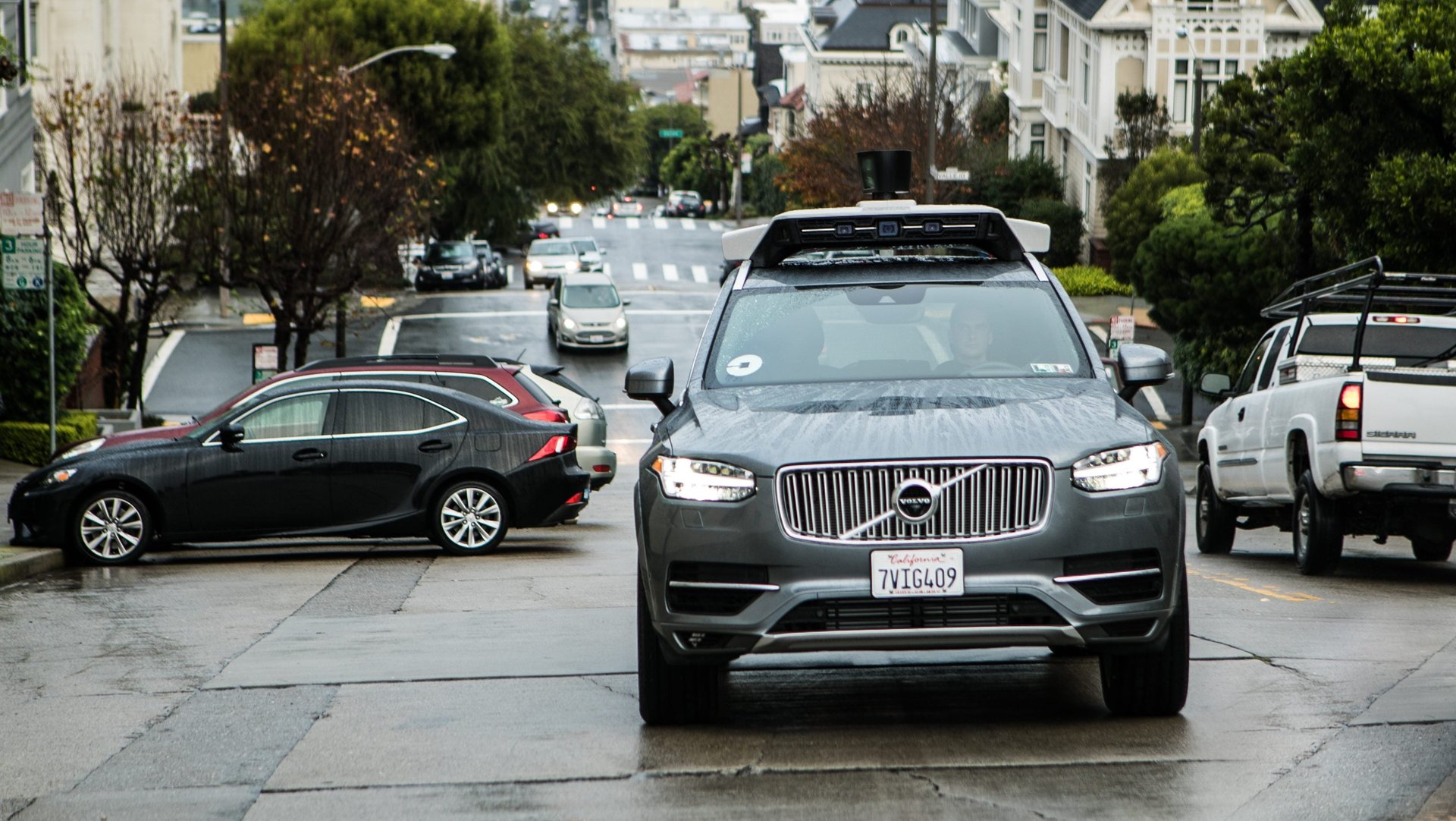California has already ordered Uber to halt its self-driving car service immediately
Talk about a bad first day.


Talk about a bad first day.
Uber said today (Dec. 14) that it had begun picking up passengers in its self-driving cars in San Francisco, despite failing to get a permit for autonomous vehicle testing from the California Department of Motor Vehicles. It is the second city where Uber has introduced autonomous cars through its ride-hailing platform, after a September debut of the technology in Pittsburgh, Pennsylvania.
Already, a video uploaded to YouTube today appears to show one of Uber’s modified Volvo SUVs in San Francisco running a red light. A Lyft rider tweeted that a self-driving Uber swerved into her intersection on a crowded street. And the California DMV sent a letter to Anthony Levandowski, the head of Uber’s self-driving efforts, demanding the company halt its self-driving car service until it obtains the proper permitting.
“Had Uber obtained an autonomous vehicle testing permit prior to today, the company’s launch would have been permissible,” the DMV wrote. “However, it is illegal for the company to operate its self-driving vehicles on public roads until it receives an autonomous vehicle testing permit. Any action by Uber to continue the operation of vehicles equipped with autonomous technology on public streets in California must cease until Uber complies.”
In the YouTube video, a stoplight turns from green to yellow to red near the Museum of Modern Art in San Francisco’s South of Market neighborhood. The car carrying the camera slows to a stop as the light turns yellow, while a few other cars pass through the intersection. The road clears and then, after a few seconds, one of Uber’s autonomous Volvo SUVs drives straight through while the light is clearly red.
Uber said in a statement that the incident was a human error. “This is why we believe so much in making the roads safer by building self-driving Ubers,” the company said. “This vehicle was not part of the pilot and was not carrying customers. The driver involved has been suspended while we continue to investigate.”
In a second reported mishap, Annie Gaus, a writer in San Francisco, tweeted that a self-driving Uber “lurched into the intersection” while she was traveling in a Lyft along Van Ness Avenue, a major artery in San Francisco that is undergoing massive construction and frequently clogged with traffic.
Testing of autonomous vehicles is currently regulated at the state level in the US. Uber is taking advantage of a regulatory void in Pennsylvania, which has yet to enact autonomous-vehicle legislation, and has chosen to sidestep rules in California by putting its autonomous cars into service on Dec. 14. To date, California’s DMV has issued permits for testing self-driving vehicles to 20 companies, among them Google, Tesla, GM, Ford, and Honda.
Uber did not immediately respond to a request for comment about the DMV’s call for the company to suspend its self-driving operations.
In a blog post published earlier today, Levandowski said permitting was for “cars that can drive without someone controlling or monitoring them.” In both San Francisco and Pittsburgh, the cars are monitored by both a safety driver and an Uber test engineer. The cars, Levandowski argued, “are not yet ready to drive without a person monitoring them.”
Despite not obtaining a permit, the DMV appears to have been aware of Uber’s plans. The agency wrote in a statement yesterday that its permitting process was designed to “ensure public safety.” Existing regulations require companies testing autonomous vehicles to notify the DMV of any accidents within 10 business days, and to submit an annual report detailing when humans took over during testing or when self-driving technologies were forced to disengage. “Twenty manufacturers have already obtained permits to test hundreds of cars on California roads,” the DMV said. ”Uber shall do the same.”
Uber’s autonomous cars have also run into hurdles in Pittsburgh. In one incident in late September, an Uber driver pulled to the side of the road filmed one of the company’s self-driving Ford Fusions turning the wrong way on a one-way street. Another Uber driver in the city saw a self-driving car parked awkwardly at an intersection known for frequent rear-ending incidents, in what appeared to be the aftermath of a minor accident.
Uber has rushed to put self-driving cars on the road—with real passengers in their seats—at a time when the technologies remain largely unproven. A self-driving Google car hit a public bus earlier this year while trying to make a right turn in Silicon Valley. In May, the driver of a Tesla Model S died in an accident while he had the autopilot function enabled. In late September, Google suffered its worst crash yet when another driver ran a red light and barreled into its self-driving Lexus.